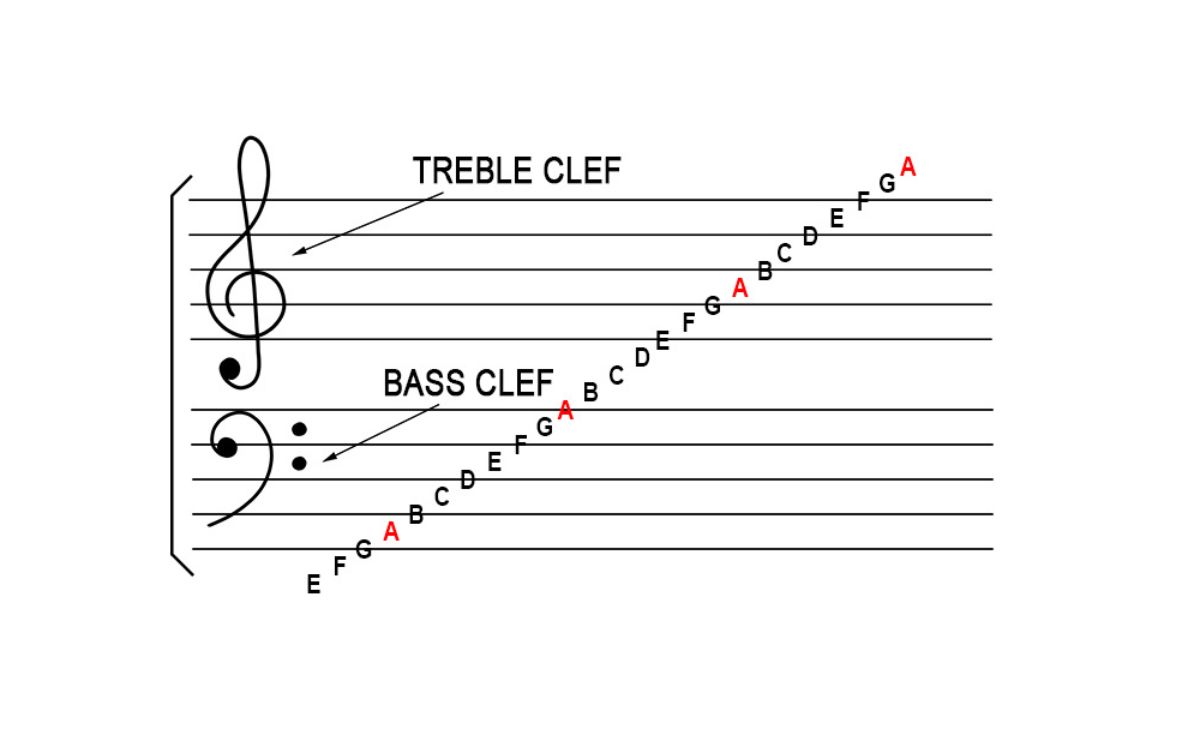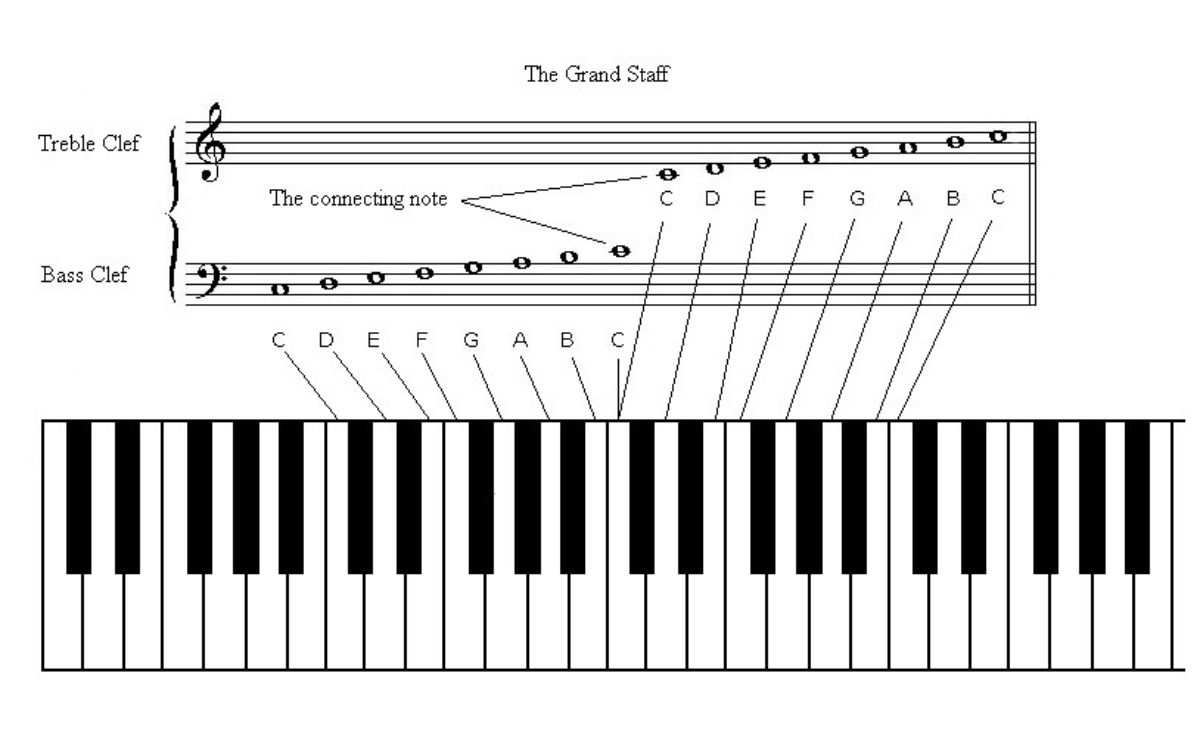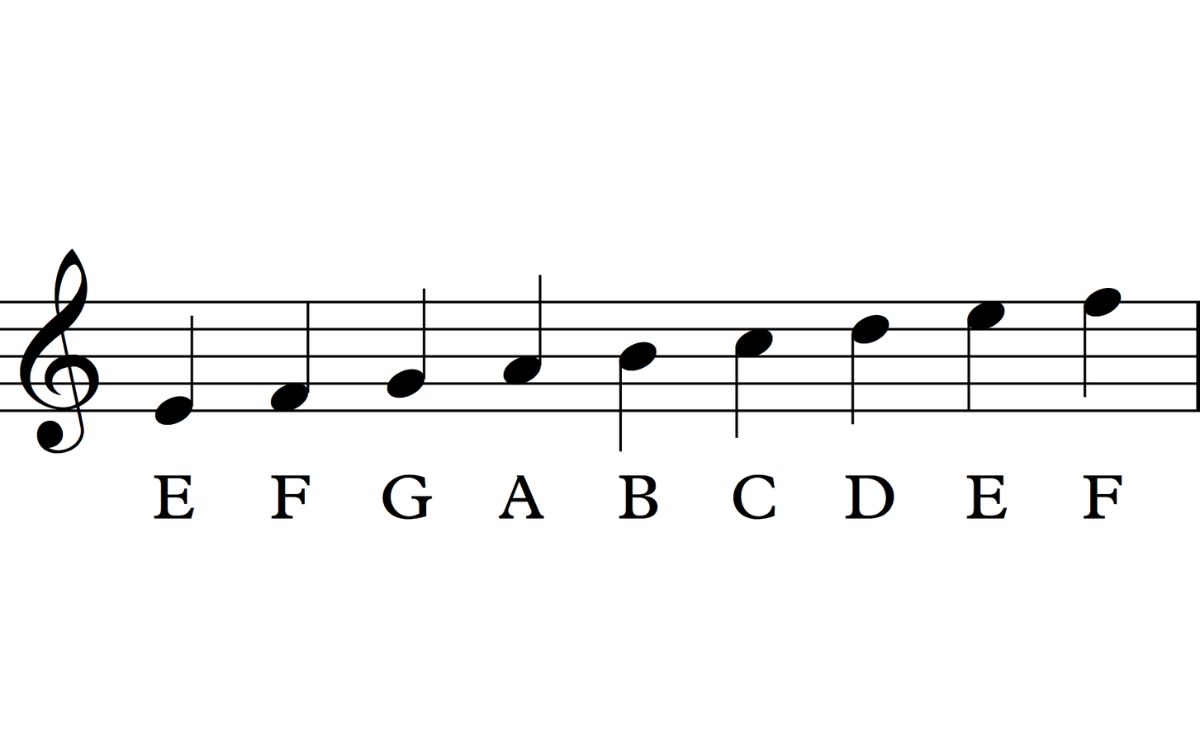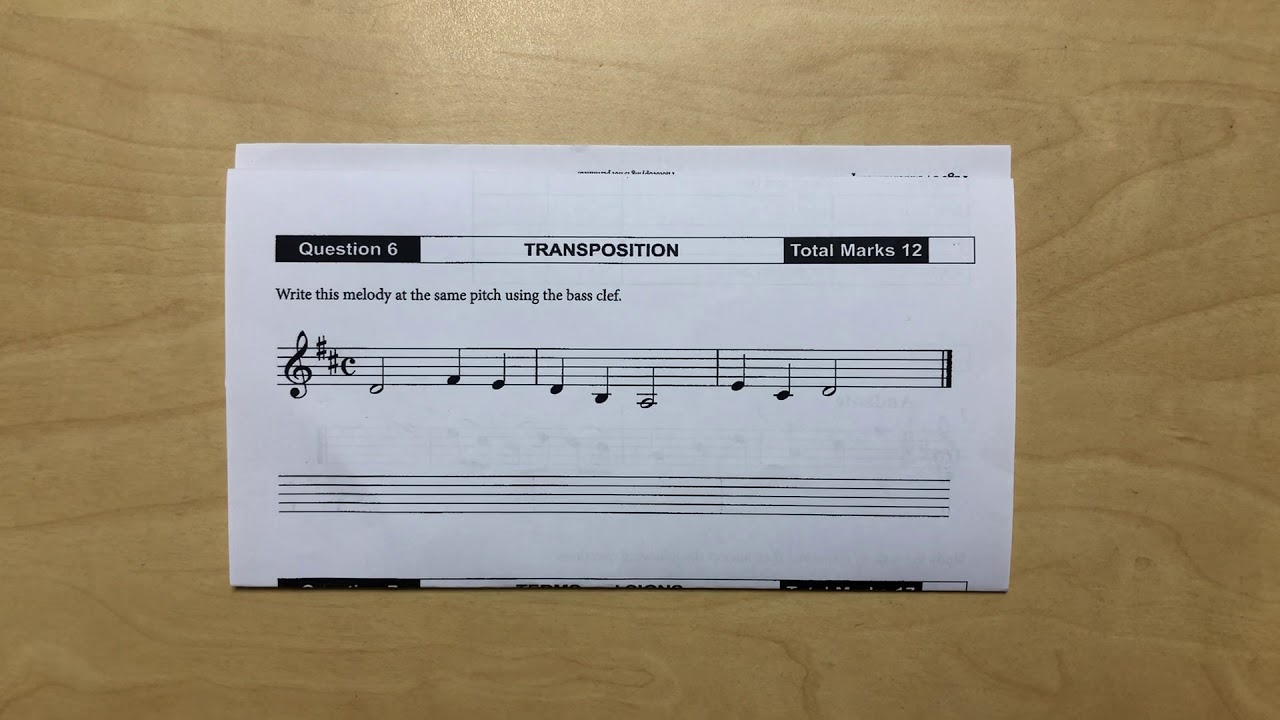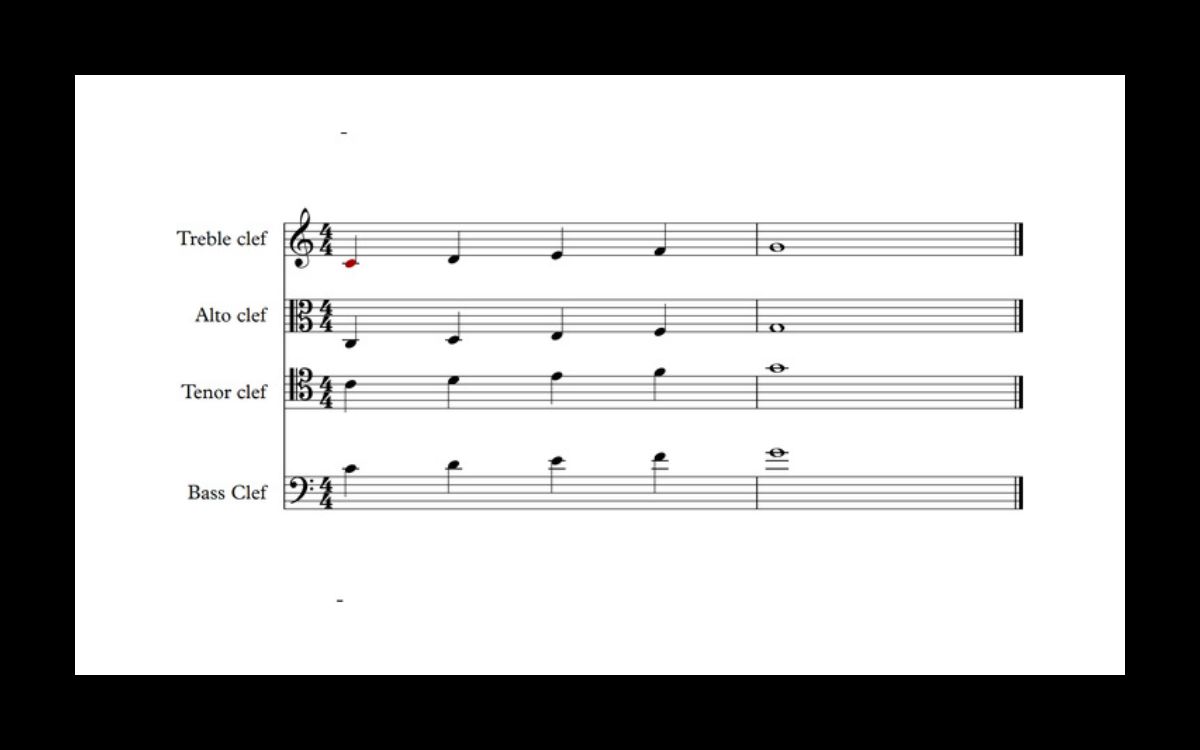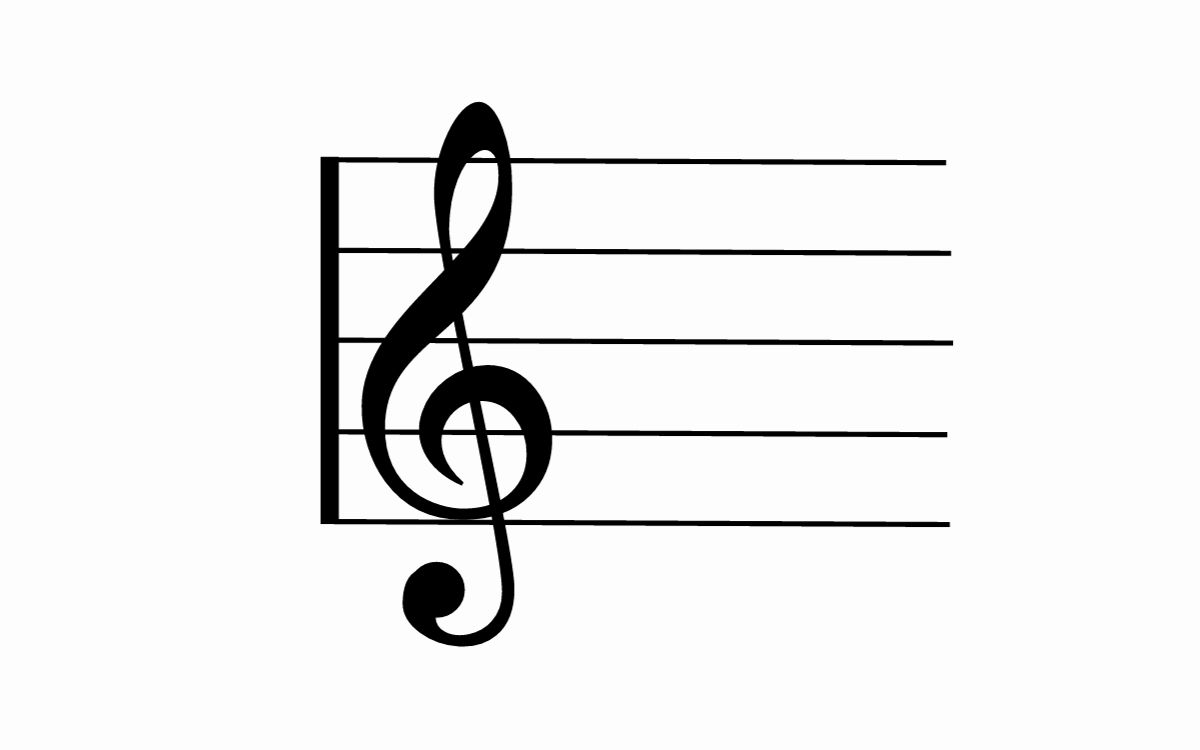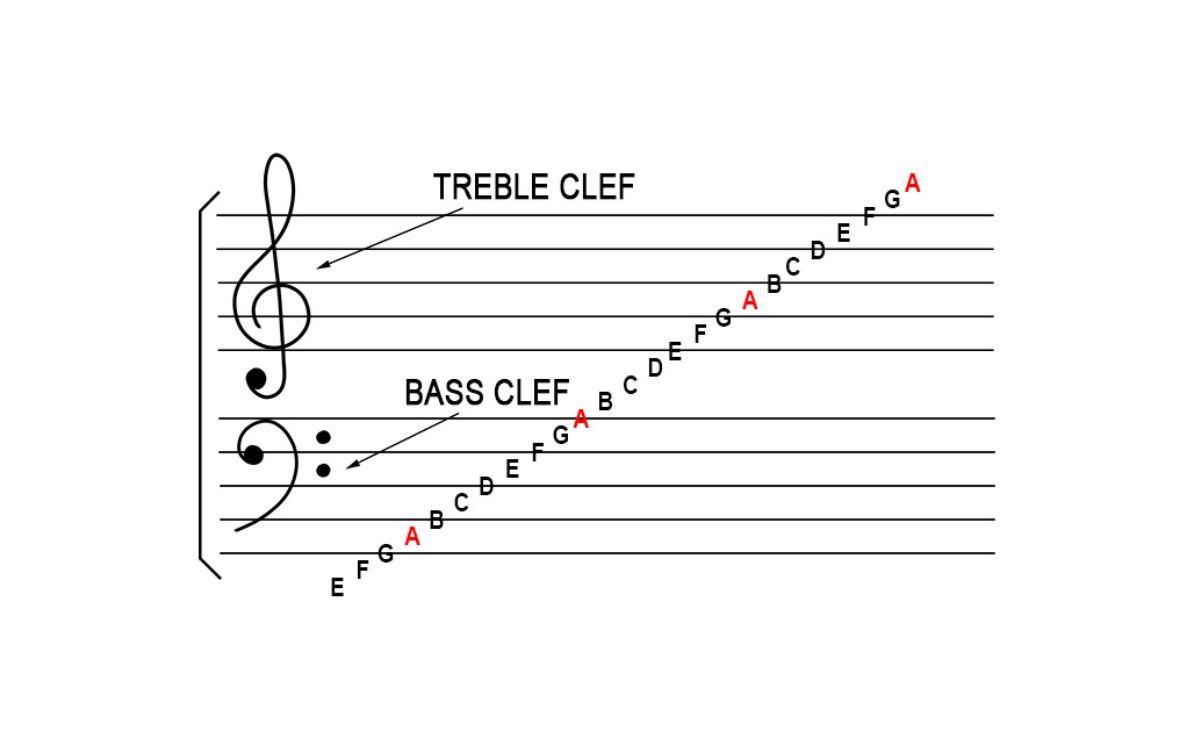Home>Production & Technology>Treble>What Note Is On The 1st Line Of The Staff In The Treble Clef?


Treble
What Note Is On The 1st Line Of The Staff In The Treble Clef?
Modified: January 22, 2024
The treble clef's first line note on the staff signifies the letter E. Master the basics of reading sheet music with our helpful guide.
(Many of the links in this article redirect to a specific reviewed product. Your purchase of these products through affiliate links helps to generate commission for AudioLover.com, at no extra cost. Learn more)
Table of Contents
Introduction
The treble clef is a fundamental notation system used in sheet music to represent higher-pitched musical notes. Also known as the G clef, it is easily recognizable by its curving line that wraps around the second line of the musical staff. Understanding the treble clef is essential for musicians, composers, and music enthusiasts as it helps in reading and interpreting melodies accurately.
In this article, we will explore the note that is represented on the first line of the treble clef staff. We will delve into the intricacies of the treble clef and how it relates to different musical notes. Whether you are a beginner musician learning to read sheet music or simply curious about the inner workings of treble notation, this article will provide you with a comprehensive understanding of the note on the first line of the treble clef. So, let’s dive in and uncover the mystery behind this fundamental element of music notation!
Understanding the Treble Clef
Before we explore the note on the first line of the treble clef, let’s first grasp the basic concept of the treble clef itself. The treble clef is one of the most commonly used clefs in Western music notation, primarily used to represent higher-register instruments such as the piano, violin, flute, and trumpet.
The treble clef consists of a curved line that starts on the second line of the staff (counting from the bottom) and spirals upward. This line represents the note G, hence the alternate name of the clef as the G clef. The treble clef is specifically designed to optimize the visualization and notation of higher-pitched notes, making it easier to read and play melodies in the upper register of musical instruments.
Understanding the treble clef staff is crucial in recognizing the placement of different musical notes. Each line and space on the staff corresponds to a specific note on the musical scale, allowing musicians to accurately read and interpret sheet music. The treble clef staff consists of five lines and four spaces, totaling nine possible positions for notes to be written. This arrangement provides a wide range for representing notes and allows for precise musical notation.
To aid in identifying the notes represented on the staff, additional lines and spaces are employed. Ledger lines, small lines that extend the staff either above or below, are used to represent notes that fall outside the range of the staff. By utilizing ledger lines, musicians can notate higher or lower pitches beyond the confines of the staff, ensuring the accurate representation of musical scores.
Now that we have a better understanding of the treble clef and its purpose, let’s turn our attention to the first line of the staff and explore the note that it represents in the treble clef system.
The 1st Line of the Treble Clef Staff
The first line of the treble clef staff plays a vital role in the overall notation system, as it represents a specific note in the musical scale. Understanding the note on the first line is crucial for reading and playing melodies accurately.
In the treble clef system, the first line is known as E. This means that when a note is placed on the first line of the staff, it represents the pitch of E. This note is often referred to as “E in the space.”
As we mentioned earlier, the treble clef staff consists of five lines and four spaces. Each line or space on the staff corresponds to a specific note in the musical scale. With the treble clef, the lines and spaces represent the following notes, from bottom to top:
- 1st line – E
- 2nd line – G
- 3rd line – B
- 4th line – D
- 5th line – F
- Space below 1st line – F
- Space above 5th line – A
- Space between 2nd and 3rd lines – C
- Space between 4th and 5th lines – E
It’s important to note that the positioning of the notes on the lines and spaces of the treble clef allows for efficient and accurate reading of melodies. By associating each line and space with a specific note, musicians can quickly identify and play the correct pitches.
Understanding the note represented on the first line of the treble clef staff is just the beginning. By delving further into the staff, you can explore a wide range of musical notes and notations that come together to create beautiful melodies. Let’s now focus on the specific note represented on the first line of the treble clef and uncover its significance in music.
The Note on the 1st Line of the Treble Clef
As we mentioned earlier, the first line of the treble clef staff represents the note E. This note, when placed on the first line, indicates that the pitch being represented is E. Understanding the significance of this note is essential in decoding sheet music and playing melodies accurately.
E is an important note in the musical scale. It is a natural note, meaning it is not modified by any sharps or flats. In the treble clef, E is positioned right below the space that represents the note F. This proximity to F is significant because it provides a clear visual and auditory cue for musicians when moving between these particular notes.
The note E has a distinct sound and is often described as bright and vibrant. It is a common note used in various musical genres and can evoke different emotions depending on the context of the composition. E serves as a foundational note in many melodies, harmonies, and chord progressions, making it an integral part of musical compositions.
In addition to its role as a stand-alone note, E is also used as a reference point for recognizing other notes on the staff. By understanding the placement of E on the first line, musicians can easily identify and relate the surrounding notes within the treble clef system.
It’s important to note that music notation is not limited to a single octave. With the use of ledger lines, notes can be represented both above and below the treble clef staff. This allows for a wide range of pitches to be notated and enables musicians to play melodies spanning several octaves.
To summarize, the first line of the treble clef staff represents the note E. This note plays a crucial role in music notation and serves as a reference point for identifying other notes in the treble clef system. Understanding the note on the first line is essential for reading sheet music accurately and playing melodies with precision.
Conclusion
In this article, we have explored the fascinating world of the treble clef and delved into the note that is represented on the first line of the treble clef staff. We have learned that the treble clef is a fundamental notation system used to represent higher-pitched musical notes and is commonly used in Western music notation.
Understanding the treble clef is essential for musicians and music enthusiasts as it enables them to read and interpret melodies accurately. The first line of the treble clef, representing the note E, plays a significant role in music notation. It serves as a foundational note and serves as a reference point for identifying other notes on the staff.
By familiarizing ourselves with the treble clef system and the note on the first line, we can enhance our understanding of sheet music and improve our abilities as musicians. Whether you are a beginner learning to read music or an experienced musician looking to deepen your knowledge, understanding the treble clef and the notes it represents is an important step on your musical journey.
In conclusion, the note on the first line of the treble clef, E, holds immense importance in music notation. By grasping its significance and its relationship to other notes on the staff, we can navigate the treble clef system with ease and precision. So, embrace the treble clef, explore its depths, and let the notes on the first line guide you as you embark on your musical adventure.

